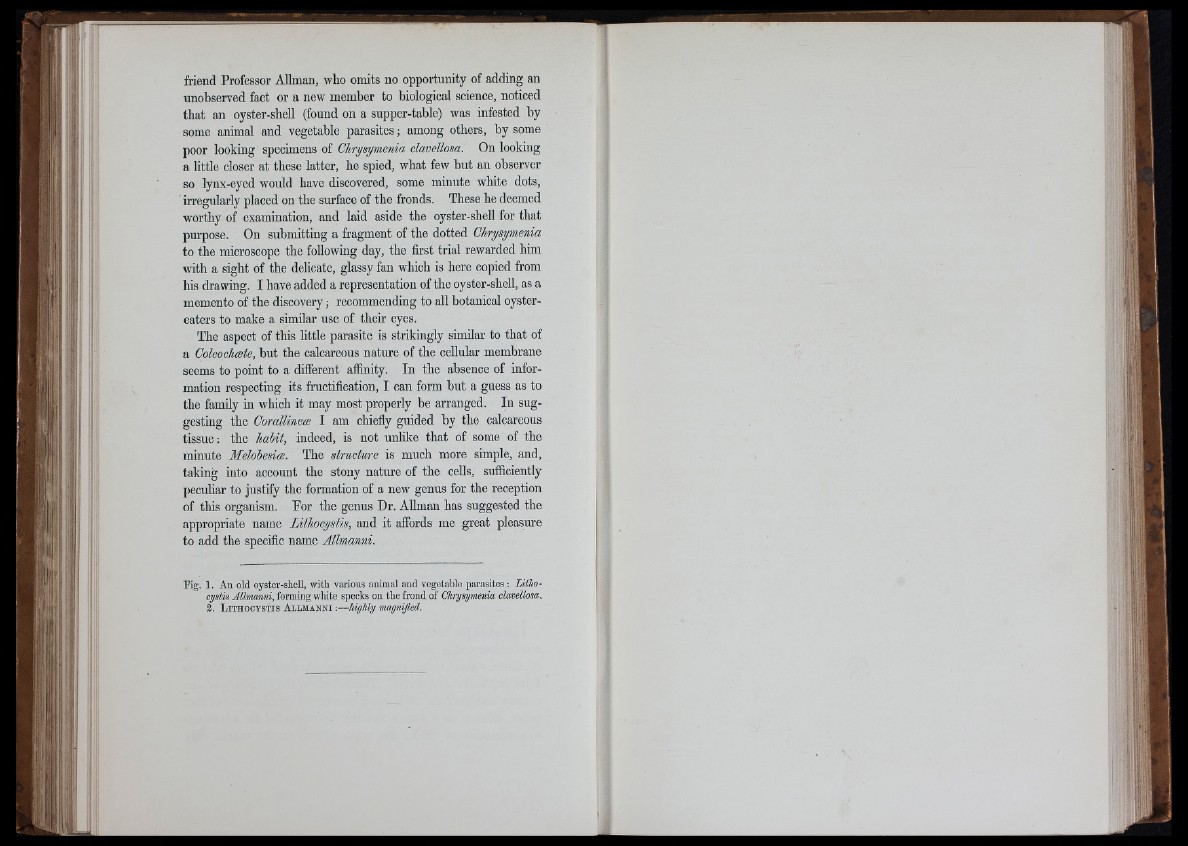
fff
« ■ 1
iriii !
hl
friend Professor Allman, who omits no opportunity of adding an
unobserved fact or a new member to biological science, noticed
that an oyster-shell (found on a supper-table) was infested by
some animal and vegetable parasites ; among others, by some
poor looking specimens of Clirysymenia clavellosa. On looking
a little closer at these latter, he spied, what few but an observer
so lynx-eyed would have discovered, some minute white dots,
irregularly placed on the surface of the fronds. These he deemed
worthy of examination, and laid aside the oyster-shell for that
purpose. On submitting a fragment of the dotted Clirysymenia
to the microscope the following day, the first trial rewarded him
with a sight of the delicate, glassy fan which is here copied from
his drawing. I have added a representation of the oyster-shell, as a
memento of the discovery ; recommending to all botanical oyster^
eaters to make a similar use of their eyes.
The aspect of this little parasite is strikingly similar to that of
a Coleochæte, but the calcareous nature of the cellular membrane
seems to point to a difierent affinity. In the absence of information
respecting its fructification, I can form but a guess as to
the family in which it may most properly be arranged. In suggesting
the Corallineoe I am chiefiy guided by the calcareous
tissue: the habit, indeed, is not unlike that of some of the
minute Melobesiæ. The structure is much more simple, and,
taking into account the stony nature of the cells, sufficiently
peculiar to justify the formation of a new genus for the reception
of this organism. Por the genus Dr. Allman has suggested the
appropriate name Lithooystis, and it affords me great pleasure
to add the specific name Allmanni.
Fig. 1. An old oyster-shell, with various animal and vegetable parasites : lith o -
cystis Allmanni, forming w hite specks on the frond of Ohrysymnia clavellosa.
3. L i th o o y s t i s A llm a n n i :— hiylily mag.
' '"I
’ii